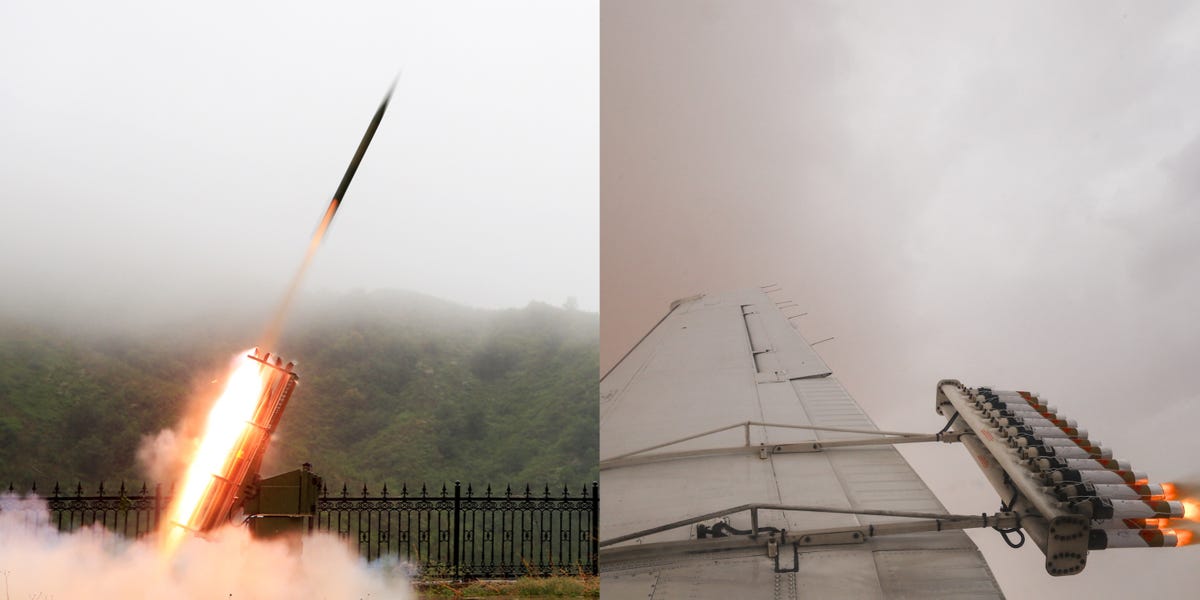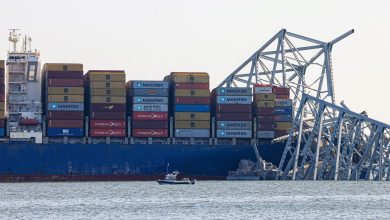US, UAE Have Done It for Years

- Cloud seeding involves spraying salts onto incoming storm clouds to increase precipitation.
- The photos show how the United Arab Emirates, the United States and other countries have been seeding clouds for decades.
- Historic flooding in Dubai is not due to cloud seeding, but human climate impacts play a role.
As the desert city of Dubai flooded on Monday, onlookers pointed fingers at government efforts to “cloud seed.”
The program sends planes into oncoming storm clouds to inject them with substances that could help produce more rain. Could this be the cause of two years of rain that fell on the UAE city in a single day?
Motorists drive through a flooded street following heavy rain in Dubai. GIUSEPPE CACACE/Getty
It’s a tantalizing explanation. Trying to control the weather can feel like playing God. And if thousands of years of media and oral tradition tell us anything – from Prometheus to Frankenstein – playing God has bad consequences.
But the UAE has been sowing clouds for 20 years to encourage rainfall and combat drought. Some US states have been doing this for even longer. These programs have found that the practice has a small effect on rainfall, increasing it by around 5 to 15 percent, although a UAE official told Reuters it can be as much as 30 percent for them.
Flames ignite on a cloud seeding device in an attempt to get more snowfall in the Rocky Mountains near Lyons, Colorado. Thomas Peipert/AP Photo
Many other countries, including China and Australia, have experimented with this technique.
Cloud seeding is not the driving force behind Dubai’s historic flooding, several scientists say.
How Cloud Seeding Works
Flares release water-attracting substances during a cloud-seeding flight operated by the National Center of Meteorology, between Al Ain and Al Hayer, United Arab Emirates. Amr Alfiky/Reuters
To “seed” a cloud, you need to spray it with microscopic particles of a salt such as silver iodide, calcium chloride, or potassium chloride.
A ground engineer restocks one of the UAE National Meteorology Center’s cloud seeding planes with new salt flares. Andrea DiCenzo/Getty Images
In the UAE and many US states, planes get the job done. In some places, like Utah, machines on the ground blast the substance into air currents that can carry it into the clouds.
Militia members load equipment for cloud seeding operations to combat drought amid heatwave warning in Dongkou County, Shaoyang, Hunan Province, China China. China Daily via Reuters
All of these particles have a crystalline structure, similar to that of ice, which allows water droplets to cling to them. As the water converges, it forms an ice crystal and eventually falls as snow or rain.
This mimics the natural rain-making process that occurs inside the cloud.
Packets of salt are photographed during a cloud seeding operation at a military airbase in Subang, Malaysia. Lim Huey Teng/Reuters
“Cloud seeding cannot create clouds out of thin air. It encourages water already in the sky to condense more quickly and drop water in certain places. It must so first moisture, without it there would be no clouds,” Friederike Otto , lecturer in climate science at Imperial College London and co-founder of the groundbreaking scientific collaboration World Weather. Attribution, said in a statement to the Science Media Center (SMC).
The real threat behind Dubai floods
Many atmospheric scientists have rejected the idea that cloud seeding was the cause of the Dubai flooding. Experts told the SMC that the rains came from a rare cloud system, which was already expected to bring heavy rain, and that the effect of any cloud seeding would have been minimal.
“This distracts us from the real story, which is that because of our collective failure to phase out fossil fuels, we must prepare for unprecedented extremes, which will get worse until we reach “zero net,’” said John Marsham, atmospheric scientist and Met. Office co-chair of the University of Leeds, told SMC.
Jeff Big Jeff, 58, uses a raft to move his belongings from his tent at a homeless encampment on Bannon Island, along the swollen Sacramento River. Gary Coronado/Los Angeles Times via Getty Images
Rising global temperatures are leading to heavier precipitation events across the planet, even in places that are typically dry or even in the midst of a drought. This type of weather whiplash occurs because of a basic fact of physics: warmer air holds more water.
“Any possible effect of cloud seeding in these circumstances would be minimal,” Marsham added.
Indeed, the UAE is not the only desert or drought-stricken region that has been devastated by heavy rains in recent years. Death Valley experienced catastrophic and historic flooding in 2022, 2023 and this past February.
Cars were stuck in mud and debris after flash floods in California’s Death Valley National Park. National Park Service via AP
A series of moisture-laden atmospheric rivers interrupted California’s years-long drought last winter, killing at least 22 people, according to a Los Angeles Times tally.
Cars piled up after being swept off the road during historic flooding in California’s Sacramento County in 2023. Fred Greaves/Reuters
“If humans continue to burn oil, gas and coal, the climate will continue to warm, precipitation will continue to become heavier and people will continue to lose their lives in floods,” Otto said.
businessinsider





